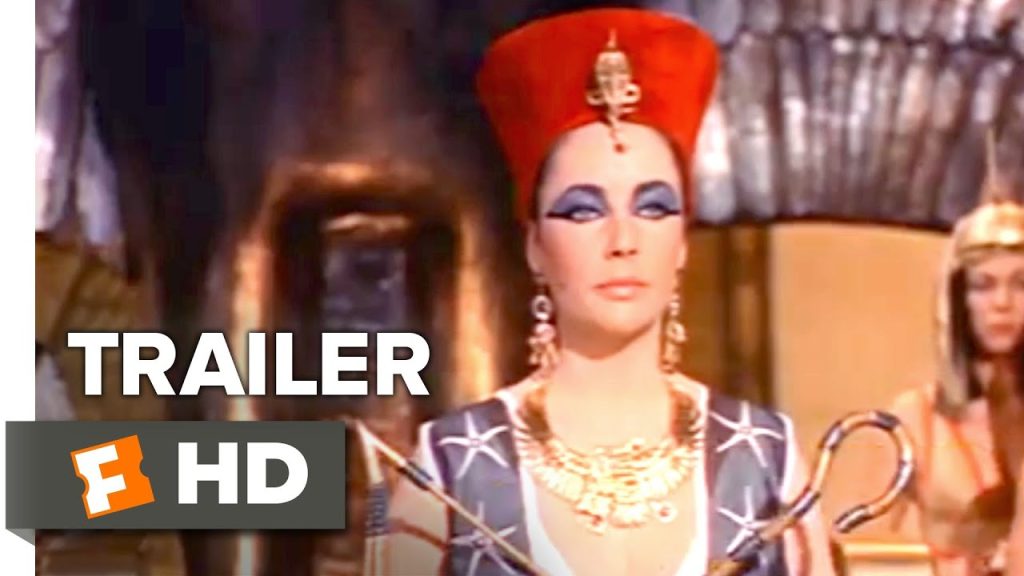Avatar: The Way of The Water has proven to be an incredibly successful venture, with its global box office revenue surpassing a whopping $1.7 billion. It took the renowned director James Cameron a significant amount of time to compose the sequel following the release of the original movie in 2009. As such, Avatar fans have been eagerly awaiting his next installment in this captivating franchise for over a decade now.
From 2015 to 2019, Cirque du Soleil produced an immensely popular and successful stage show based on the movie Toruk – The First Flight. This show ran in many cities worldwide and also spawned an equally impressive attraction at Walt Disney World’s Pandora: The World of Avatar. Over its four-year run, this production achieved tremendous success with both critics and audiences alike.
In 2017, the World of Avatar was unveiled to the world. This much-anticipated land is often jokingly referred to as ‘Pocahontas with Blue People’, and it has certainly lived up to expectations. With its stunning scenery and immersive environment, this incredible theme park experience has been met with great enthusiasm by those who have visited it so far.
Avatar, an enigmatic entity in the cultural milieu, has achieved remarkable success at the box office; it is now officially the biggest-grossing movie of all time with a colossal revenue of $2.908 billion. This impressive figure is testimony to its popularity among audiences worldwide.
The movie is largely forgotten nowadays, despite being an ambitious project that utilized revolutionary techniques of motion capture and computer-generated imagery. It was a bold endeavor at the time, but unfortunately, its character development and plot have failed to remain in the public’s collective memory.
Although the narrative of the film may be seen as unremarkable, if one delves deeper into its production history they will discover that it has been in development for a staggering fifteen years. By taking time to explore what lies beneath the surface, an appreciation can be gained for the sheer amount of dedication and hard work that has gone into creating this mediocre movie.
Project 880 and the Beginnings of ‘Avatar’
James Cameron is an incredibly ambitious director who has produced some of the most successful and iconic movies of all time. His projects, such as Titanic, Aliens, and Terminator have left a lasting impression on the industry due to their spectacular visuals, unique use of technology, and groundbreaking special effects. He continues to strive for excellence in his work by pushing the boundaries of what can be achieved with cinema.
Despite facing opposition and criticism for his other projects, in 1994 James Cameron was determined to fulfill his vision of creating a masterpiece. He wrote an 80-page treatment for Avatar, which many people viewed as too ambitious at the time; however, Cameron remained unyielding in his pursuit of this project. His unwavering ambition resulted in Avatar becoming one of the most successful films ever made.
Originally known as Project 880, this movie was a combination of all the aspects that the creator was passionate about; science-fiction and the ‘lost world’ literary genre.
It was a story of self-exploration, encompassing topics like imperialism and ecology, as well as a clash between Man and Nature. Upon later reflection, he noticed similarities between his work and other works such as Dances With Wolves, Princess Mononoke, and Lawrence of Arabia; all of which had evidently served as inspirations for these early ideas.
He had ambitious dreams of creating a fully computer generated film featuring characters back in the late 90s, inspired by the colossal success of Titanic. He was determined to make this vision a reality and set out on his quest to bring it to life.
Despite his passion and ambition, James Cameron was frustrated by the technological limitations of the time. In order to bring his vision for the film to life, he needed CGI that could create a realistic effect – an effect that simply wasn’t possible given the state of computer-generated imagery at the time. These were very early days in terms of CGI development; although it was rapidly advancing, it remained relatively rudimentary and not capable of creating truly lifelike effects.
This didn’t discourage him from his dream of making a feature film; he merely set it aside for the time being, and decided to concentrate on producing documentaries like Expedition: Bismark and Ghosts of the Abyss. His enthusiasm for the ocean was unwavering, and during this period he devoted himself to perfecting the technology that would eventually be used in Avatar..
During the late 1990s and early 2000s, a remarkable transition occurred in cinema, as CGI and motion captured performances rapidly gained popularity. This period marked a major milestone for the medium, with some truly groundbreaking productions that remain iconic to this day.
The extraordinary performances of Andy Serkis as Gollum in The Lord of the Rings film trilogy and Bill Nighy as Davy Jones in Pirates of the Caribbean: Dead Man’s Chest (2006) served to motivate and spur on the filmmakers, leading them to believe that it was now time for a new challenge – bringing Pandora to life through fully motion-captured performance.
Making the World of ‘Avatar’
In 2005, development began with a meticulous rewriting of the script and the construction of the Na’vi and their world. This commitment to precision is what made the Disney World attraction so triumphant, hinting that there could be great potential for its upcoming sequel.
Dr. Paul Frommer, a linguist, was responsible for creating the fictional language of the species which includes roughly 1000 words. He drew inspiration from two unique languages, Amharic and Te Reo Maori, to craft a wholly original language that would befit this species.
The geography of Pandora was inspired by the majestic, stunning landscape of the Huangshan mountains in China, as well as rare flora from all corners of the globe, creating an eclectic mix of natural beauty that was then amplified and exaggerated to a degree that made it both alien and strangely familiar. It’s unique topography has allowed it to become one of the most visited places in history.
Two separate concept artists dedicated a considerable amount of time and effort to create the human machinery and the Pandoran landscape distinctly from each other. A significant portion of the production design was devoted solely to this task, as it was crucial for these two distinct elements to be accurately represented in order to bring James Cameron’s vision for Avatar to life.
James Cameron was determined to ensure that the world of Pandora from his classic film Avatar would be brought to life in a way that reflected the advancements in technology since he originally conceived the idea. To this end, he enlisted the services of acclaimed visual effects studio Weta FX, ensuring they could create a compelling cinematic experience with stunning visuals and remarkable special effects.
However, despite all the preparation that had been done, Fox Studios became increasingly hesitant. This was due to their previous experiences with James Cameron and his determination which caused them a great deal of difficulty during the production of Titanic, leading to an exorbitant budget and extended delays in completion.
‘Avatar’ Was on Budget & on Time
Principal photography commenced in April 2007, taking advantage of the tangible sets located in a Los Angeles aircraft stage and the digital studios situated in Wellington. This provided an ideal set-up to capture the perfect shots for this production.
All of the performers who participated in this production underwent intense and thorough training to familiarize themselves with their respective parts. In order to ensure that each actor was comfortable and well-prepared for their part. Sigourney Weaver, who was cast as exobiologist Dr. Grace Augustine, took it a step further by collaborating with the set designers and a professor of plant biology, so she could gain an in-depth knowledge of Pandora’s native flora and fauna. This intensive research allowed her to portray her character on screen.
In addition to the intense physical training that the cast was put through, they were also schooled in a variety of skills such as horseback riding, archery, hand-to-hand combat and firearm use. All of them worked hard to become action superstars for this movie, and with motion capture technology and digital enhancement being used instead of laborious make-up applications, shooting scenes was much more efficient.
Cameron was successful in keeping the budget intact and even managed to deliver the project nearly as per schedule, thereby effectively allaying any apprehensions that the studio had initially harbored.
He invested a large amount of effort in marketing the film, travelling to Comic-Con every year from 2009 until its release in December. He placed particular emphasis on the themes of environmental conservation and the weird new universe that he had created within this movie. His ultimate goal was to ensure that it made a lasting impression upon audiences around the world.
Financially, it was a spectacular success, becoming the highest grossing movie of all time until Avengers: Endgame recently edged it out. However, with the recent re-releases, Avatar has regained its status as the top earner in cinematic history. Its financial success is unprecedented and unlikely to be surpassed any time soon.
Despite some flaws, the dedication and hard work of James Cameron, the actors and the production team on this movie is beyond doubt. Their commitment to making this film was evident in every scene, and it is a testament to their skill that they managed to create such an iconic movie with all its imperfections.
The use of computer-generated imagery (CGI) in films is a hotly debated topic, with many claiming that it is excessively utilized or lacks verisimilitude. However, the success of Avatar stands as one of the best illustrations of the benefits CGI can bring to a movie. The groundbreaking visuals and intricate world-building achieved through its implementation demonstrate just how powerful a tool CGI can be when used correctly.
James Cameron’s Titanic is a story that is steeped in history. The production of the film was nothing short of tumultuous, due to Cameron’s insatiable desire for authenticity and his unwavering commitment to having absolute control over his work. Consequently, the project encountered many difficulties along the way; however, it ultimately proved to be an immense success.
The technology behind Avatar was something that gave James Cameron all the control he could ever have wished for, without making life difficult for the cast, crew and studios on set. The innovations he developed enabled him to create a world where his vision could be fully realised, with minimum disruption during production.
Technology can be an incredible tool in helping to make any dream a reality. Even the iconic design of the Na’vi, which featured so prominently in James Cameron’s blockbuster Avatar, was based on a dream his mother once had. Through the use of technology, Cameron was able to bring this dream to life and create something that has been beloved by audiences all over the world ever since.
Avatar was an endeavor of sheer passion, and the sequel has left us with eager anticipation for what is to come in this series. With the immense effort that has gone into creating its universe, it will be fascinating to witness how much further it can go.



 RELATED POSTS
RELATED POSTS





0 Comments